Wah Chang, Star Trek FX designer, dies
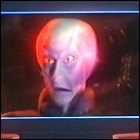 Oscar-winning sculptor, artist and model maker Wah Ming Chang was probably best known in SF circles for creating elaborate creatures for Star Trek (including the Horta, the alien face of Balok, and the tricorder props) and The Outer Limits. Chang also won the Oscar for special effects for George Pal’s film adaptation of The Time Machine. He also created costumes on such non-SF movies as The King And I and Cleopatra, for which he sculpted Elizabeth Taylor’s headdress. He was 86 years old.
Oscar-winning sculptor, artist and model maker Wah Ming Chang was probably best known in SF circles for creating elaborate creatures for Star Trek (including the Horta, the alien face of Balok, and the tricorder props) and The Outer Limits. Chang also won the Oscar for special effects for George Pal’s film adaptation of The Time Machine. He also created costumes on such non-SF movies as The King And I and Cleopatra, for which he sculpted Elizabeth Taylor’s headdress. He was 86 years old.

 The video game-inspired album
The video game-inspired album 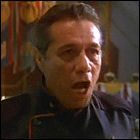 Sci-Fi channel airs
Sci-Fi channel airs  Sci-Fi channel airs
Sci-Fi channel airs 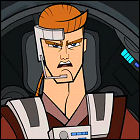 Bridging the gap between Star Wars Episode II and Episode III, Cartoon Network premieres the
Bridging the gap between Star Wars Episode II and Episode III, Cartoon Network premieres the  Bridging the gap between Star Wars Episode II and Episode III, Cartoon Network premieres the
Bridging the gap between Star Wars Episode II and Episode III, Cartoon Network premieres the  The first volume of
The first volume of  The
The 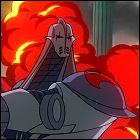 Bridging the gap between Star Wars Episode II and Episode III, Cartoon Network premieres the
Bridging the gap between Star Wars Episode II and Episode III, Cartoon Network premieres the  The
The 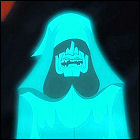 Bridging the gap between Star Wars Episode II and Episode III, Cartoon Network premieres the
Bridging the gap between Star Wars Episode II and Episode III, Cartoon Network premieres the 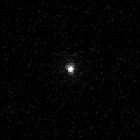 Astronomers using NASA’s Spitzer Space Telescope announce the discovery a tiny planet, with a diameter of only 2,000 kilometers, orbiting the sun three billion kilometers past Pluto. That places it at an average ten billion kilometers away from Earth – with a solar year that lasts around 10,000 years. Sedna is also spotted from ground-based telescopes as well, using the initial observations made by the Spitzer Telescope; its diameter, only 300 kilometers less than that of Pluto, intensifies the “Pluto as a planet” debate that has been raging since the discovery of Quaoar.
Astronomers using NASA’s Spitzer Space Telescope announce the discovery a tiny planet, with a diameter of only 2,000 kilometers, orbiting the sun three billion kilometers past Pluto. That places it at an average ten billion kilometers away from Earth – with a solar year that lasts around 10,000 years. Sedna is also spotted from ground-based telescopes as well, using the initial observations made by the Spitzer Telescope; its diameter, only 300 kilometers less than that of Pluto, intensifies the “Pluto as a planet” debate that has been raging since the discovery of Quaoar.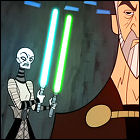 Bridging the gap between Star Wars Episode II and Episode III, Cartoon Network premieres the
Bridging the gap between Star Wars Episode II and Episode III, Cartoon Network premieres the 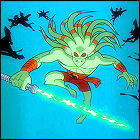 Bridging the gap between Star Wars Episode II and Episode III, Cartoon Network premieres the
Bridging the gap between Star Wars Episode II and Episode III, Cartoon Network premieres the 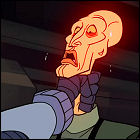 Bridging the gap between Star Wars Episode II and Episode III, Cartoon Network premieres the
Bridging the gap between Star Wars Episode II and Episode III, Cartoon Network premieres the  Bridging the gap between Star Wars Episode II and Episode III, Cartoon Network premieres the
Bridging the gap between Star Wars Episode II and Episode III, Cartoon Network premieres the 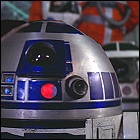
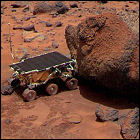 The first four inductees – two real and two fictional – are inducted into the Robot Hall Of Fame created by Carnegie Mellon University’s School of Computer Science.
The first four inductees – two real and two fictional – are inducted into the Robot Hall Of Fame created by Carnegie Mellon University’s School of Computer Science. Bridging the gap between Star Wars Episode II and Episode III, Cartoon Network premieres the
Bridging the gap between Star Wars Episode II and Episode III, Cartoon Network premieres the 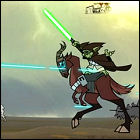 Bridging the gap between Star Wars Episode II and Episode III, Cartoon Network premieres the
Bridging the gap between Star Wars Episode II and Episode III, Cartoon Network premieres the  The soundtrack from
The soundtrack from 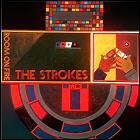
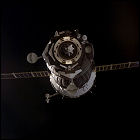 The eighth full-time crew of the International Space Station lifts off from Russia’s Baikonur Cosmodrome aboard Soyuz TMA-3. Alexander Kaleri and Michael Foale take up residence on the ISS for 194 days, both of them veterans of long-term stays aboard the Mir space station; arriving on the ISS with them for a ten-day stay is Spanish astronaut Pedro Duque, who returns to Earth aboard Soyuz TMA-2 with the Expedition 7 crew.
The eighth full-time crew of the International Space Station lifts off from Russia’s Baikonur Cosmodrome aboard Soyuz TMA-3. Alexander Kaleri and Michael Foale take up residence on the ISS for 194 days, both of them veterans of long-term stays aboard the Mir space station; arriving on the ISS with them for a ten-day stay is Spanish astronaut Pedro Duque, who returns to Earth aboard Soyuz TMA-2 with the Expedition 7 crew.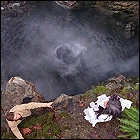 Pay cable channel Showtime premieres
Pay cable channel Showtime premieres 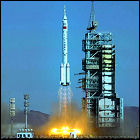 China becomes the third country to independently launch a crewed mission with the flight of Shenzhou 5, an orbital flight lasting almost 22 hours. Taikonaut Yang Liwei becomes the first Chinese citizen to leave Earth, though
China becomes the third country to independently launch a crewed mission with the flight of Shenzhou 5, an orbital flight lasting almost 22 hours. Taikonaut Yang Liwei becomes the first Chinese citizen to leave Earth, though 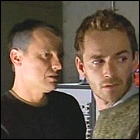 Pay cable channel Showtime premieres
Pay cable channel Showtime premieres  With its hand forced by a scoop in the London Daily Telegraph, the BBC confirms that plans are afoot to relaunch Doctor Who as a full television series for the first time since 1989. As the series has only just been commissioned, no casting decisions have been made yet, but the series is to be overseen by writer and producer Russell T. Davies, whose most high-profile project at the time is the gay-themed drama series Queer As Folk (though Davies also contributed a novel to the Doctor Who New Adventures book series in the late ’90s, and has been approached several times by Big Finish Productions to write a script for a Doctor Who audio story). Production won’t begin until sometime in 2004, with the series set to premiere in 2005. The BBC had planned to sit on the news until November 23rd, 2003 – the 40th anniversary of Doctor Who’s first broadcast.
With its hand forced by a scoop in the London Daily Telegraph, the BBC confirms that plans are afoot to relaunch Doctor Who as a full television series for the first time since 1989. As the series has only just been commissioned, no casting decisions have been made yet, but the series is to be overseen by writer and producer Russell T. Davies, whose most high-profile project at the time is the gay-themed drama series Queer As Folk (though Davies also contributed a novel to the Doctor Who New Adventures book series in the late ’90s, and has been approached several times by Big Finish Productions to write a script for a Doctor Who audio story). Production won’t begin until sometime in 2004, with the series set to premiere in 2005. The BBC had planned to sit on the news until November 23rd, 2003 – the 40th anniversary of Doctor Who’s first broadcast.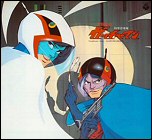 In Japan,
In Japan, 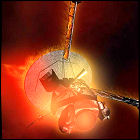 The mission of the unmanned space probe Galileo ends in the clouds of the giant planet Jupiter, which it has orbited for eight years. Even as Galileo plunges toward Jupiter, it detects and reports evidence of a thin ring sharing the orbit of the small moon Amalthea, and then disintegrates as it falls into Jupiter. NASA has opted to send Galileo to its destruction, rather than risking a collision with Europa, which may harbor some of the ingredients necessary for life and might be contaminated if Galileo impacted it; Galileo’s mission was extended three times, with the vehicle lasting six years longer than anticipated in the original mission plan’s estimates, which included for the harsh radiation environment of Jupiter as a factor in expecting only a two-year mission.
The mission of the unmanned space probe Galileo ends in the clouds of the giant planet Jupiter, which it has orbited for eight years. Even as Galileo plunges toward Jupiter, it detects and reports evidence of a thin ring sharing the orbit of the small moon Amalthea, and then disintegrates as it falls into Jupiter. NASA has opted to send Galileo to its destruction, rather than risking a collision with Europa, which may harbor some of the ingredients necessary for life and might be contaminated if Galileo impacted it; Galileo’s mission was extended three times, with the vehicle lasting six years longer than anticipated in the original mission plan’s estimates, which included for the harsh radiation environment of Jupiter as a factor in expecting only a two-year mission.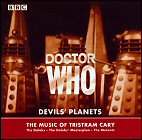 Celebrating 40 years of Doctor Who,
Celebrating 40 years of Doctor Who, 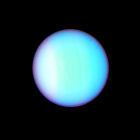 Astronomers using the Hubble Space Telescope discover two new moons of Uranus that eluded detection during Voyager 2’s 1986 flyby: Cupid and Mab. Both small, dark bodies that orbit closer to Uranus than any of the planet’s large satellites, Cupid and Mab raise the number of known Uranian satellites above 20. Mab’s orbit keeps it within the planet’s outermost ring, while Cupid’s orbit is only 500 miles further out than that of Belinda, one of the small moons discovered in 1986 by Voyager 2. Cupid is the tiniest of the inner moons of Uranus, roughly 11 miles in diameter.
Astronomers using the Hubble Space Telescope discover two new moons of Uranus that eluded detection during Voyager 2’s 1986 flyby: Cupid and Mab. Both small, dark bodies that orbit closer to Uranus than any of the planet’s large satellites, Cupid and Mab raise the number of known Uranian satellites above 20. Mab’s orbit keeps it within the planet’s outermost ring, while Cupid’s orbit is only 500 miles further out than that of Belinda, one of the small moons discovered in 1986 by Voyager 2. Cupid is the tiniest of the inner moons of Uranus, roughly 11 miles in diameter.